Beijing is an incredible introduction to many of China’s most appealing sites due to its impressive history, culture, and scenic features. The city satisfies perks for all types of travelers, be it ancient structures, untouched natural world, or cosmopolitan cultural activities, thanks to having diverse day trips. This article aids the reader in booking the top 10-day tours from Beijing for the year 2025, featuring moving sights such as the Great Wall and smaller local villages tucked away filled with genuine Chinese customs and traditions. This list is curated to help you make the most of your time in and around the capital, from historical featured tours to stunning nature hiding spots. Get enthused to discover exciting adventures waiting for you, all from a short distance away!
What are the Must-Visit Beijing Day Trip Destinations?
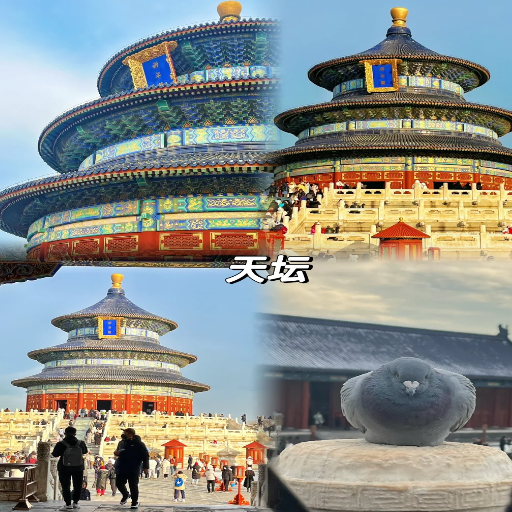
What are the Must-Visit Beijing Day Trip Destinations
1. The Great Wall of China
Beijing is incomplete without The Great Wall. While popular sections like Mutianyu and Jinshanling are breathtaking and easy to hike, Jiankou is better suited for seasoned explorers seeking wilderness.
2. The Summer Palace
Famous for its traditional Chinese architecture, lakes, and lush gardens, the Summer Palace is a site of peace in the city. Unlike the crowded city, it is the perfect retreat for relaxation, further accentuated by its recognition as a UNESCO World Heritage Site.
3. Ming Tombs
A glimpse into China’s imperial history is the magnificent architecture of the Ming Dynasty, whose thirteen emperors rested in these tombs in a beautiful valley.
4. Gubei Water Town
At the Simatai section of The Great Wall sits a charming replica of an ancient Chinese village, Gubei Water Town. Take in the relaxing atmosphere, cultural performances, and canal-side views.
5. Longqing Gorge
Brilliant green waters, sheer cliffs, and the ability to go dragon boating or ride a cable car make Longqing Gorge a breathtaking sight outside Beijing.
Exploring the Great Wall of China
The Great Wall of China amalgamates history, construction, and beautiful scenery. It was initially built to shield against invasions, now it stands as a symbol of cultural heritage. Each section has its variety of interests and caters to different preferences. The wall’s length is over 13,000 miles.
1. What section of the wall is best for my visit?
Badaling: The restored section has easy access and is great for first-time visitors.
Mutianyu: Friendlier family vibe due to fewer crowds, offers a cable car and toboggan.
Jiankou: Untouched rugged terrain is appealing to photographers.
Simatai: Night tours and visits to Gubei Water Town are ideal for this section.
2. What tips and tricks do I need to know for preparing?
Best Time to Visit: Autumn and Spring.
Hiking Difficulty Ratings:
Easy-Medium Level (Mutianyu and Badaling): Casual Walks or Families.
Medium-High Level (Jiankou and Simatai): Experienced Hikers Only.
Clothing and Gear:
Shoes that have no slip.
Weather layers.
Hat and sunscreen for sun protection.
Transportation:
Buses public for Badaling and Mutainyu: These buses regularly operate from Beijing stations.
Taxi or Private Tours are suitable for time efficiency.
This guide will give you an unforgettable yet safe adventure at this world-renowned monument. Identify the section that best resonates with your interests and make the necessary preparations.
Unearth the History of the Ming Tombs
The Ming Tombs, built during the Ming Dynasty (1368 – 1644) and resting at the foothills of Tianshou mountains, symbolize the merging of nature and human civilization. The tombs house the remains of 13, along with their empresses and concubines, Ming emperors, and are built in a fancy and meticulously crafted manner, indicating the rich culture of the era.
Key Facts and Features
- Location: About 50 kilometers (31 miles) northwest of Beijing.
- Area Covered: Roughly 120 square kilometers (46 square miles).
- Prominent Tombs to Visit:
- Changeling: The largest and best-preserved, dedicated to Emperor Yongle.
- Dingling: The only excavated tomb belonging to Emperor Wanli, showcasing an underground palace.
- Zhaoling: Known for its elegant design and simplicity.
Construction and Layout
Being luxurious, the Ming dynasty was designed using the strict principles of feng shui. Main tombs and chiseled graves are aligned to a Sacred Way stone path, which is covered with animal and official statues. The earthly tombs are further planned within stone structures with intricate symbolism of alabaster, heaven-ward. Jades, silk coats, and various other art pieces are found inside the tombs, showing the richness and spiritual practices of Ming Emperors.
Visitor Information
- Hours of Operation: Typically 8 AM to 5 PM, with seasonal adjustments.
- Entrance Fees: Ranges from 30–60 RMB depending on the tomb(s) visited.
- Transportation:
- By Public Bus: Easily reachable via Beijing’s Bus 872 or 314.
- By Car/Taxi: A 1.5-hour drive from central Beijing.
- Tours: Many guided tours include the Ming Tombs and the Great Wall.
The Ming Tombs offer an extraordinary glimpse into this period of magnificence and examine the burial customs of ancient Chinese civilization.
Admire the Beauty of the Summer Palace
The Summer Palace in Beijing is an exhibition of Chinese garden-style designs and cultural legacy at its best. I was deeply moved by its broad scope, including Kunming Lake and Longevity Hill, which are aesthetically engineered. The Summer Palace has a surface area of roughly 2.9 square kilometers, of which approximately 3/4 is water. Significant engineering accomplishments are the 17-Arch Bridge of 150 meters, the colossal Marble Boat, and the Long Corridor, which is about 728 meters long and contains more than 14 thousand pictures. All of the buildings demonstrate the finest artistry and their historic value, thus embodying the imperial of China. This is why the Summer Palace serves as a great wonder of China.
How do you plan a day trip from Beijing?
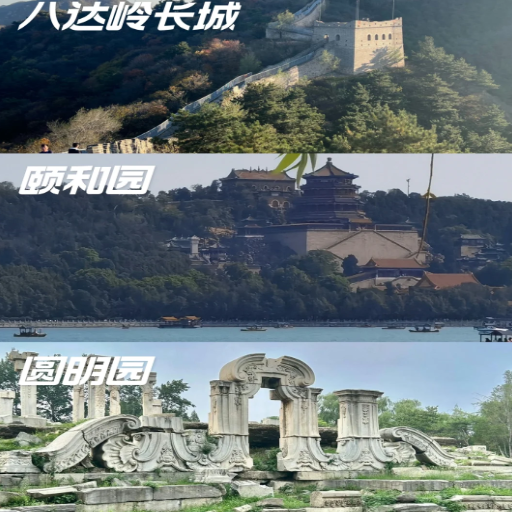
How do you plan a day trip from Beijing
Creating a day trip to The Summer Palace from Beijing is straightforward and enjoyable. To get started, consider what form of transportation you would like to use: option one would be to use the subway and take line 4 to Beigongmen Station, which is economical and easy. Arrive early to uncover as much of the vast grounds as possible. Be sure to wear comfortable walking shoes and check the weather for the day, as most of the visits will require walking outside. While there are some options for refreshments within the grounds, be sure to bring some water and snacks as well. The most convenient sites, such as Long Corridor, Marble Boat, and Legs Longevity Hill, should be prioritized for their historical and architectural value. Pay attention to the stunning views of the serene Kunming Lake whilst enjoying the sunset; these views are breathtaking. Finally, a well-planned itinerary ensures a fulfilling and memorable day trip.
Choosing the Best Itinerary
Determine your available time to create an optimal itinerary for your visit. In ideal circumstances, a full day is available, during which you can view all the landmarks and enjoy the gorgeous scenery. If time is an issue, focus on key sites like Legs Longevity Hill and the Marble Boat, as those are the true highlights.
Key Considerations for Your Itinerary:
- Time Available:
- A partial-day visit Focuses on the top places, like the Long Corridor and Kunming Lake viewpoint. Plan to spend 30 to 45 minutes per site.
- A full-day visit involves visiting all crucial sights in detail and spending at least 1-1.5 hours in featured places.
- Walking Distance:
- Depending on the route selection, it requires moderate fitness levels and approximately 2-4 miles of walking (3-6.5 km).
- Accessibility:
- Some steep areas (Longevity Hill) and walking paths may require good shoes. Some places with limited mobility have accessible pathways.
- Refreshments and Facilities:
- On-site cafes or personal snacks may be consumed during the break after every 2-3 hours of activity.
Considering these points for your itinerary allows you to maximize enjoyment while managing the overall experience.
Travel Tips for a Seamless Day Tour
Prepare:
Plan your trips years in advance. Research every nook and cranny of your destination, accumulating knowledge of its heroics such as operating hours, entry fee charges, and seasonal highlights. Don’t forget to use the online maps to gauge and plan the stop for the rest time accordingly.
Monitor the weather parameters and dress appropriately, layering clothes if necessary.
Packing Essentials:
Suitable and comfortable walking shoes in addition to seasonal attire.
Foot protection from the sun through a wide-brim hat, gentle sunscreen, and sunglasses for those sunny days.
I strongly advise reusable water bottles with a capacity between 16-32oz, which is my favorite.
For people like me who can never seem to charge their phones, I recommend at least a 10,000 mAh portable phone charger with a cable.
Make sure to bring some snacks or energy bars. It is conducive to self-guided tours to keep energy levels up.
You can save insane amounts on other vehicles’ expenses by using public transportation or rideshare apps and checking their local availability.
If you bring your vehicle, check the routes prepared and ensure that the navigation system maps are padded with Backup third-party tools, such as Maps or Waze, which also have mobile apps.
Personal medication of choice, personal hygiene products such as tranexamic acid wipes, gentle adhesive bandages, and a mild first aid kit are necessary.
Make sure to keep paper labels of emergency contact numbers alongside escalation authorities like nearby medical facilities.
Comfort:
Every 2-3 hours, a break to rest, hydrate, and enjoy refreshments.
Plan to identify shaded areas of your destination where you can escape extreme weather conditions.
Considering these factors, creating a day tour that is seamless, pleasurable, and adequately planned for is possible.
Selecting a Private Guide for Personalized Tours
Whether visiting a new city or country, having a private local tour guide to help you explore the destination is advisable for a better experience. Once you hire a guide, I recommend doing proper background research concerning them. For starters, I look at their ratings and recommendations online, but before that, I ensure it is someone who is locally professional with impressive attributes and good communication skills. Things to note include the following:
- Licensing/Certification: Review if the guide has major local or national tour-guide certifications.
- Group Size Limits: Understand their level of expertise to match the size of your group so that they can provide the individual attention you are likely to need (smaller groups are better).
- Languages Spoken: Ascertain the guide can fluently speak your preferred language.
- Availability and Flexibility: Confirm they are readily available and likely to meet your preferred interests.
After validating these considerations and checking reliable travel sites, I guarantee that my private tour guide will invariably meet my expectations.
Is the Mutianyu Great Wall Worth Visiting?
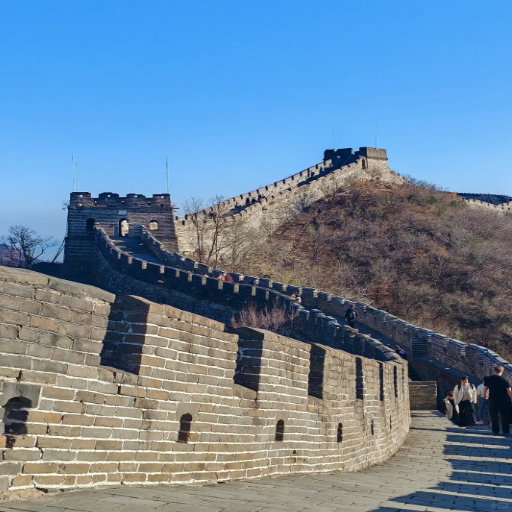
Is the Mutianyu Great Wall Worth Visiting
The Mutianyu Great Wall is a beautiful section of the Great Wall that attracts fewer tourists than other sections. It offers stunning views, well-preserved architecture, and a sense of peace. Its swift accessibility from Beijing makes it an excellent pick for travelers seeking history and natural beauty. The section is breathtaking when explored in ancient towers or riding its scenic cable car. At the same time, it seamlessly combines cultural heritage with beauty.
Highlights of the Mutianyu Section of the Great Wall
- Historical Significance
Mutianyu was built during the Northern Qi Dynasty and reconstructed during the Ming Dynasty. Its worth as an iconic cultural treasure is unquestionable. It served an essential purpose in protecting the northern city of Beijing, and its value remains intact even today.
- Architectural Features
The wall was astonishingly engineered to show strength, including 22 watchtowers spanning 4 kilometers. In addition to the granite wall, which stands 7 meters high and 4 meters wide, these towers are astonishing pieces of military technology. This section truly showcases exceptional skills from the past.
- Natural Scenery
The green hills surrounding Mutianyu make it look like a fairy tale throughout all the seasons. From the colorful flowers in spring to white-covered mountains in winter, Mutianyu captivates with its stunning beauty all year.
- Accessibility
Mutianyu is open to visitors from all over the world. Located 70 km from Beijing, it is reachable by car or bus and takes 1.5- 2 hours to arrive. Once there, a more spartan option is to take a cable car or hike up the wall.
- Modern Amenities
Rest areas along paths and cable cars are modern amenities guaranteed to amaze visitors of all ages. To further help you enjoy the visit, chair lifts and a toboggan ride adds to the comfort.
Using the Cable Car for Scenic Views
The section of the wall of China, known as the Mutianyu, provides a valuable cable car service that gives splendid views of the wall and its neighboring nature. The Mutianyu Great Wall Cable Car Company operates this cable car service and features the latest gondolas, guaranteeing a smooth and safe ride. The cable car station is located at the foot of the site, and the cable car travels directly to Tower 14, which has some of the best views of the Great Wall of China.
Key Features
- Capacity: Each gondola accommodates up to 4 passengers comfortably.
- Length: The cable car route spans approximately 723 meters (2,372 feet).
- Duration: The ride takes about 5 minutes, offering ample opportunity for panoramic views.
- Speed: Operates at a controlled speed of 2–3 m/s for a leisurely ascent or descent.
- Operating Hours: Typically 8:00 AM to 5:00 PM, but seasonal adjustments may apply.
This cable car service is designed for tourists who do not wish to hike or walk far, eliminating activities that can be strenuous for families with younger children or the elderly. The service also allows people to view the ancient architecture of the Great Wall, surrounded by vast green mountains, making it a fantastic experience for anyone looking to travel to this world wonder.
Best Time to Visit and Avoid Crowds
In my experience and research, the best time to visit is early morning, preferably around the site opening at 8:00 am. Not only does this help you avoid mid-morning crowds, but cooler temperatures and softer lighting for photography can also be enjoyed. Weekdays, especially Tuesdays through Thursdays, aren’t as busy as weekends and public holidays, which attract larger crowds.
For plans during peak seasons like spring or fall, you should plan to arrive a little extra early. Tourist activity during these times is typically much higher. Also, for a smoother experience, purchasing tickets online in advance can save a lot of time waiting in lines while also paying attention to weather conditions. Clear skies significantly improve the feeling of the impressive mountains and aerial view. These additional preparations can make a big difference in the enjoyment and efficiency of your visit.
Can You Visit the Forbidden City in a Day?
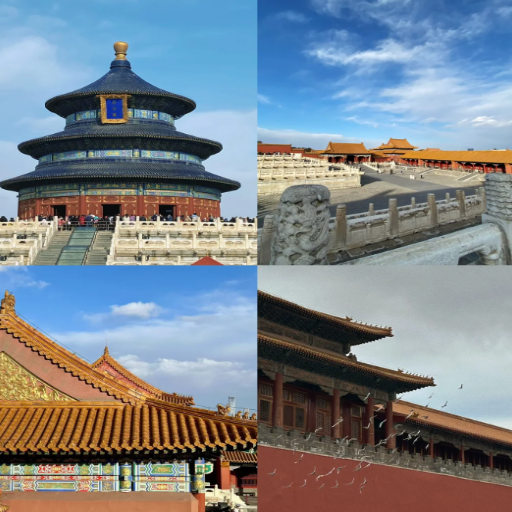
Can You Visit the Forbidden City in a Day
Yes, The Forbidden City can be visited in one day, but a meticulous plan is needed to make the most of your experience. It has more than 980 buildings and large parcels of land, so prioritizing is essential. The main highlights that should be focused on include the Meridian Gate, the Hall of Supreme Harmony, and the Imperial Garden. Allocate enough time to explore these iconic areas, and do not forget to wear comfortable walking shoes. A relaxed pace can also help pair with a guide or audio tour to gain insight into its history within a single day.
Essential Sites within the Forbidden City
The Meridian Gate (Wu Men)
Importance: The main entrance to The Forbidden City, along with the rest of the country, is a constrictive structure that serves as the signature of the majesty in the interior.
Main Characteristics: Five Arched gates and a viewing square from which imperial decrees were announced to the citizens.
Advice: Try to arrive before the sun rises its scale so you can take great photographs, as The Meridian Gate connects to the central axis of the complex.
Hall of Supreme Harmony (Taihe Dian)
Importance: The most significant and most critical of its kind. It was the most important because it was where all the ceremonies and imperial diversified activities were executed.
Main Characteristics: Unique pathway of ornately carved stones leading to lifts covered in gilded wood. A raised broad terrace, which leads to the remaining fully standing pavilion, adds more prominence.
Recommendations: Set aside 20-30 minutes to observe and record the details of the throne and roof decorations in the region.
Imperial Garden (Yuhuayuan)
Context: A regal retreat for the emperor and immediate family represents the classical style of Chinese gardens.
The Main Features are old trees, stone shapes, beautiful buildings with many flowers, and walkways with colored tiles.
Additional Recommendations: To ensure you leave with a generous appreciation of the landscape’s artistry, conclude the tour at this location for 30 minutes.
These crucial locations provide an even introduction to the Forbidden City and will ensure immersion without overloading visitors. Remember to bring a map and plan out your strategy for the visit in terms of time available, weather, and locations so your experience is better optimized.
Understanding the Qing Dynasty Architecture
The architecture of the Qing dynasty symbolizes the amalgamation of traditional Chinese styles and Manchu features, reminding us of the empire’s power and culture. Pe/masterpieces of this architecture involve axial and bilateral symmetry, expansive courtyards, timber framing, and traditional columnlike roof forms featuring sweeping eaves or intricate glazed tiles. Roofs, including those in imperial yellow, often displayed hierarchy and status.
Every detail in the architecture of the Qing period is planned with precision. The dugong (bracket system) timber and column-framed structures depend on an interlocked beam system for strength and ease of movement, which enables withstanding earthquakes. The generic building is rectangular with modular bays of 3-4 meters, though these dimensions depend on the size of the building. Roof angles are between 20° to 30°. Eaves are elaborate ridges with mythical animals designed to repel evil spirits.
Structures of palatial buildings like the Forbidden City also serve feng shui. Important buildings focus on the central axis to pay attention to balance. Lavishly decorated with imperial carved dragon symbols, the exteriors boast of authority, while the intricate scrollwork depicts historical or cultural events. The architecture of the Qing dynasty reveals multi-layer relativity with symbols and unrivaled craftsmanship designed to invoke admiration and respect.
Exploring Nearby Attractions like Tiananmen Square
If looking back into the past fuels your soul, a trip to Beijing is a great place to start, and visiting Tiananmen Square will undoubtedly enhance the experience. Spanning 109 acres, it is the most famous plaza in Beijing, China. Political importance and beautiful architecture merge within the region, allowing people to appreciate unrivaled construction achievements. Further, visit the Structy Array Monument, which towers and tells stories about modern China, and Mao Zedong’s Mausoleum, where one can learn about the astonishing figurehead. Gingerly looking over the square’s glory, you will also capture the stunning glance of the Tiananmen Gate, which symbolizes the nation’s power. All efforts have been made to maintain the squared, which includes smooth paths, guardian lodges, and even public toilets. Take the irresistibly captivating daily flag hoisting ceremony, for example, to witness the unfathomable display of national pride, get up early to avoid crowds, and do not forget your comfy shoes and the pleasantly amiable climate.
How to Get to Tianjin from Beijing for a Day Trip?
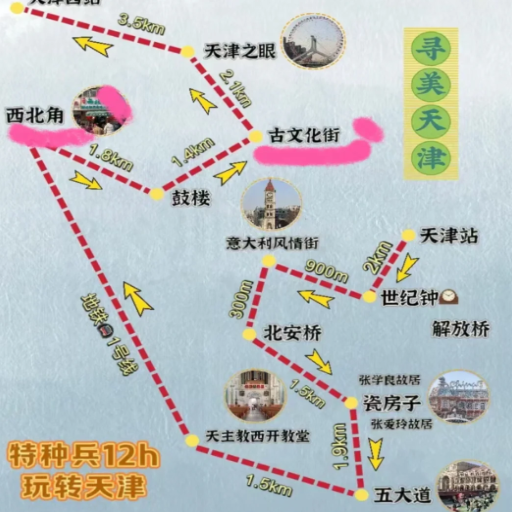
How to Get to Tianjin from Beijing for a Day Trip
Tianjin is ideally suited for day visits because it is within reach of Beijing. In around 30 minutes, you can arrive at Tianjin by high-speed train from Beijing South Railway station. There are frequent trains throughout the day, so you won’t have a problem finding one. Tickets can be reserved in advance or bought directly at the station. If you prefer the bus, it will take 1.5 to 2 hours, yet the extra time does not guarantee a higher level of comfort. It is roughly 120 kilometers from Beijing via the Beijing Tianjin Expressway for those who wish to drive.
Taking the Bullet Train for Fast Travel
Using the bullet train is the fastest and most practical way of traveling from Beijing to Tianjin. The high-speed train moves at an astounding speed of 350 km/h (217 mph), which allows it to cover the distance in about 30 minutes. The trains are available frequently, with 5 to 15-minute intervals during peak hours, allowing travelers from various regions to board throughout the day. Prices for the tickets vary from around ¥55 (USD 8) for second-class tickets to ¥93 (USD 14) for first-class tickets. Tickets can be reserved through the railways’ official websites and apps, guaranteeing convenience. Ensure to arrive at the station well before departure to clear security and board the train quickly.
Top Attractions to Explore in Tianjin
With unparalleled history, culture, and architecture, Tianjin is a city like no other. The following are some of the attractions you must see:
- Ancient Culture Street
Ancient Culture Street in Nankai District is a beautiful marketplace with shops, cultural spots, and landmarks featuring traditional Chinese architecture. Visitors can buy local snacks and authentic handicrafts and visit the Tianhou Palace, a historic Mazu Goddess temple. The street is open every day from 9 AM to 5 PM and is pedestrian-friendly for those who wish to explore the culture of Tianjin.
- The Five Great Avenues
Located in Heping District, the Five Great Avenues, or Wudadao, is another must-see area with more than 230 European-style buildings constructed from the late 19th to early 20th century. This area is a perfect reflection of Tianjin’s colonial history. Tourists can take in the region’s sights from horse-drawn carriage rides, and bike rentals are also available for those who prefer to explore things at their own pace.
- Tianjin Eye
The Tianjin Eye is situated on the Yongle Bridge and is known as a giant Ferris wheel. This classic structure is synonymous with the city of Tianjin and captures the attention of tourists across the globe. Offering unmatched views of the city and the Haihe River, the Ferris Wheel stands at a lofty 120 meters tall and takes half an hour to complete a full rotation. Tickets cost ¥70 (USD 10) per person, making them affordable for all visitors. The wheel is operational from 9 AM and closes at 9 PM. The eye, along with the city, makes for an exquisite view at night.
Tianjin is rich in history and famous for its architecture, which has been influenced by European, Japanese, and Neo-Gothic styles. At the same time, it is spectacularly modern, boasting modern skyscrapers that contribute to the city’s skyline. Such destinations accurately depict the city’s deep-rooted sand or juxtaposed cultures and traditions.
Planning Your Return Back to Beijing
Traveling to Beijing from Tianjin is simple, with different means of transport available to suit various timeframes and financial capabilities. The high-speed train is the best option, covering the 117 km (73 miles) distance between the two cities in around 30 minutes. The trains run consistently between Tianjin Railway Station and Beijing South Railway Station, with ticket prices beginning at about ¥54 (USD 7.50) for second-class quotation. Long-distance buses are also available, taking anywhere between 2 and 3 hours. The buses yourself would set you back by around ¥30-¥60 ($4-8 USD). If you wish to drive, the trip via the Beijing Tianjin Expressway takes approximately 1.5 hours, depending on traffic. For a smooth return, plan ahead of time and check the latest schedules or traffic conditions for updates.
What Makes the Jinshanling Great Wall Unique?
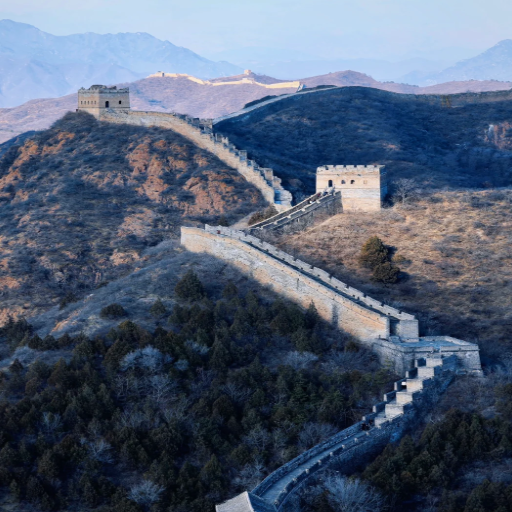
What Makes the Jinshanling Great Wall Unique
The well-preserved architecture and picturesque nature surrounding the Jinshanling Great Wall are amazing. This section, built during the Ming Dynasty, boasts watchtowers and an elaborate defensive brickwork system that testifies to ancient construction design wizardry. Because of its remote location, it attracts fewer crowds than other areas, enabling visitors to enjoy panoramic views of the mountains and history. The stunning views and immense cultural significance make the Jinshanling section of the Wall superbly authentic.
Understanding the Wall Section Differences
The Jinshanling section is unlike all other segments, such as Badaling or the Mutianyu portion, as it possesses a distinct combination of historical structure and a less commercialized nature. Badaling is exceptionally well restored to the requirements of modern tourism but tends to get congested. Mutianyu has features that are friendly to children, such as cable cars; Jinshanling attracts tourists because it remains partially unrestored.
Key differences include:
- Preservation Status: Jinshanling has a remarkable percentage of its original wrecked condition, with some portions rebuilt, which helps us understand the ancient culture of craftsmanship. On the other hand, Badaling is entirely restored, and Mutianyu is partially restored, with preserved authentic historical assets.
- Crowd Levels: Much like fencing, Jinshanling is quieter and does not attract large crowds, making it ideal for individuals seeking tranquility, unlike heavily used Badaling.
- Architectural Features:
- Jinshanling possesses more than 67 watchtowers, each with unique architectural features like multi-storied or windowed towers along the stretch of 10.5 km.
- The watchtowers were built around 150 meters from each other, which would be optimal for military guarding.
- Terrain and Difficulty:
- Jinshanling is unsuitable for inexperienced hikers. Its steep rises and distanced steps make it more challenging.
- Some sections of Mutianyu are relatively gentle, while the most gentle access and walkways characterize Badaling.
- Distance from Beijing:
- Jinshanling is about 130 kilometers (81 miles) northeast of Beijing, and it takes 2 to 3 hours to reach.
- Within 70km (43 miles), Badaling is the closest section to the city, whereas Mutianyu is more distant at around 80km (50 miles).
These distances show how important it is to choose the area of the Wall that matches the tourist’s interest and physical capacity in light of the cultural and historical value.
Photography Opportunities at Jinshanling
Jinshanling is famous among photography lovers due to its mix of well-preserved buildings, beautiful scenery, and unique lighting. This section of the Great Wall has unique characteristics, such as being partially restored, which results in a blending of rough, ancient structures placed within grand, panoramic mountains.
- Golden Hours for the Best Shots:
- Early Part of a Day or Late Part of an Afternoon is excellent for photography due to the soft, diffused light enhancing the textures of the Wall and landscape around it.
- Recommended times:
- Sunrise: Arrive around 5:00–6:00 AM, depending on the season.
- Sunset: Plan for 5:00–7:00 PM, with adjustments for seasonal changes in daylight hours.
- Iconic Photography Spots:
- East Five Window Tower and General Tower are more famous spots offering excellent views as the Great Wall runs through the rugged hills.
- Overgrown sections offer beautiful compositions for more dramatic photographs.
- The higher towers allow closer views of the panoramic mountains and sections of the Wall, allowing me to take stunning pictures.
- Technical Suggestions:
- A wide-angle (16-35mm) lens should be used while shooting, as it captures the magnificence of the Great Wall while blending in with the surrounding environment.
- For closer shots of captured details of the watchtowers or distant mountain ranges, a telephoto lens (70-200mm) is best.
- Using a tripod is strongly advised to guarantee sharp images during sunrise or sunset.
- For landscape shots to achieve greater depth of field, an aperture setting between f/8 and f/11 is ideal.
- Especially during bright days, a smaller aperture on the camera helps significantly reduce glare and color saturation.
- Seasonal Considerations:
- Spring and Autumn are highly regarded as the most picturesque settings offered. The colors captured in photographs become exceedingly vibrant with blooming florals or golden foliage.
- Winter, a victim of dramatic extremes, offers a stark atmosphere. Snow-capped mountains and frost-covered stones blend remarkably.
At Jinshanling, architecture, history, and natural beauty blend exquisitely, allowing for breathtaking images of the Great Wall. Proper equipment selection and planning ensure dynamic photography.
Trail Options for a Memorable Day Trip
If you’re considering a day trip to Jinshanling, I suggest the Jinshanling to Simatai West Trail. It is one of the most beautiful routes and is not too exhausting. This moderately strenuous hike is approximately 6 kilometers long and, depending on your speed and the number of times you stop for photographs, usually takes about 3 to 4 hours to complete. You will appreciate walking along sections of the Great Wall, partially and fully restored, since the path gives elements of nature’s beauty and history’s ruggedness.
It is important to wear supportive hiking shoes and bring at least 1.5 liters of water because the trail is steep and has few shaded areas. You should consider starting early in the morning to avoid crowds and capture spectacular lighting, especially if you intend to take pictures. The main Jinshanling section also features smaller looping trails, which are more effortless and perfect for leisurely walks.
References
Frequently Asked Questions (FAQ)
Q: What are some of the best day trips from Beijing for 2025?
A: Some of the best day trips from Beijing include visits to the Great Wall at Badaling, Mutianyu, and Simatai; exploration of the Temple of Heaven; a journey to the Terracotta Warriors in Xi’an; and a tour of the Longqing Gorge. These destinations offer a mix of cultural history, natural beauty, and iconic landmarks.
Q: How can I visit the Shilinxia Glass Viewing Platform from Beijing?
A: The Shilinxia Glass Viewing Platform can be reached via a Beijing private tour or train ride followed by a local bus. This platform offers breathtaking views of the surrounding gorge and is a popular destination for adventurous travelers.
Q: What is unique about the Huanghuacheng Great Wall?
A: The Huanghuacheng Great Wall is unique because it is partially submerged in water, creating a picturesque scene. It is also less crowded than other parts of the Great Wall, making it ideal for those looking to enjoy a quieter experience while learning about Chinese history.
Q: Can I take a train from Beijing to Tianjin for a day trip?
A: Yes, you can take a high-speed train from Beijing to Tianjin, which takes about 30 minutes. This makes it a convenient 1-day trip option to explore Tianjin’s famous attractions, such as the Italian-style town and the Tianjin Eye.
Q: What should I expect when visiting the Terracotta Army in Xi’an?
A: When visiting the Terracotta Army, you can expect to see thousands of life-sized sculptures depicting the armies of Qin Shi Huang, the first emperor of China. This archaeological marvel provides deep insight into the history and culture of the Ming and Qing dynasties.
Q: Can you visit Datong on a day trip from Beijing?
A: While Datong is a bit further away from Beijing, it can be visited as part of a one-day or five-day itinerary. You can take an early train or a private car to explore its attractions, such as the Yungang Grottoes and the Hanging Monastery.
Q: What are the benefits of a private tour of the Great Wall in Beijing?
A: A Beijing private tour to the Great Wall offers personalized service, flexibility in itinerary, and the convenience of a private car. You can visit less crowded sections like Jiankou or explore famous parts like Juyongguan at your own pace.
Q: How can I experience traditional Peking culture during a day trip?
A: To experience traditional Peking culture, you can explore the historic hutongs in Beijing, visit the Temple of Heaven, and enjoy a local dumpling meal. These activities provide a glimpse into the city’s rich cultural heritage and daily life.
Q: What is the travel time from Beijing to the Jingdong Stone Forest Gorge?
A: The travel time from Beijing to the Jingdong Stone Forest Gorge is approximately 2-3 hours by car. This scenic area is open to the public and offers stunning natural formations and opportunities for hiking and photography.
Q: Why should I include a visit to the Juyongguan section of the Great Wall in my itinerary?
A: The Juyongguan section of the Great Wall is one of the most well-preserved and accessible parts, making it an excellent choice for visitors who want to see this iconic structure and learn about its strategic importance in Chinese history.